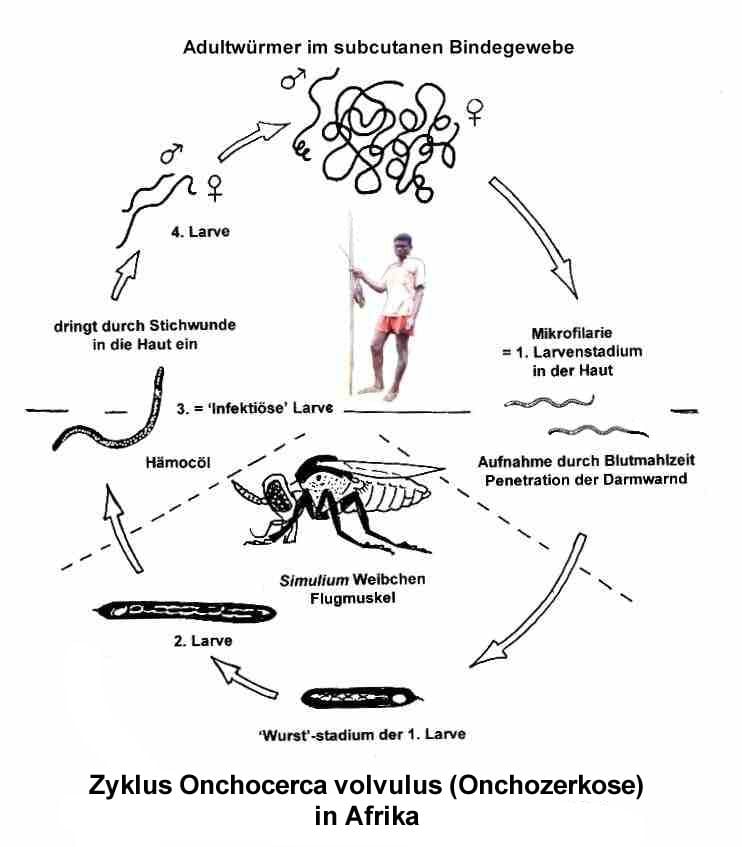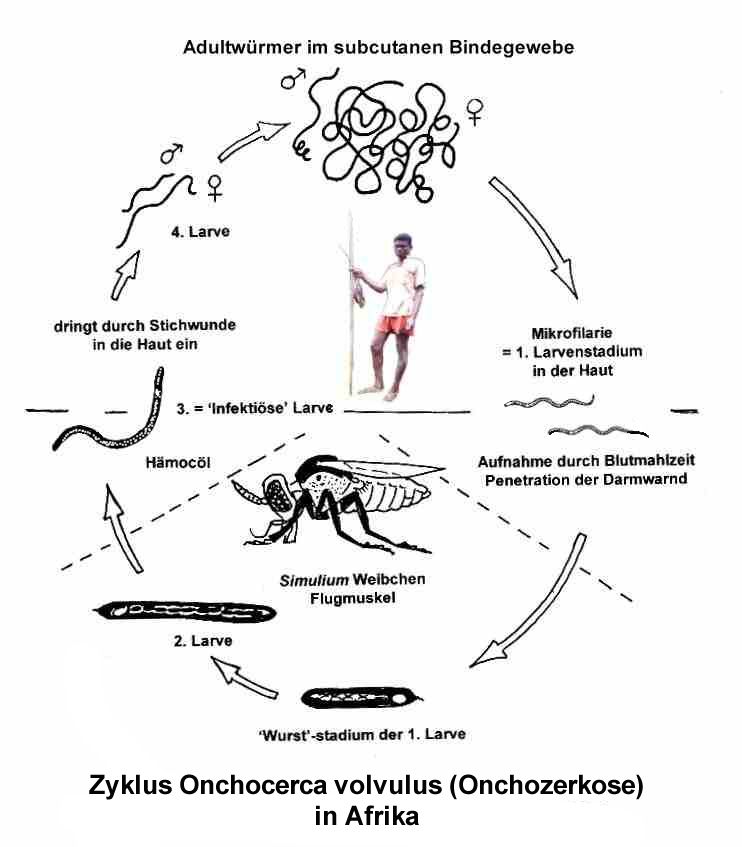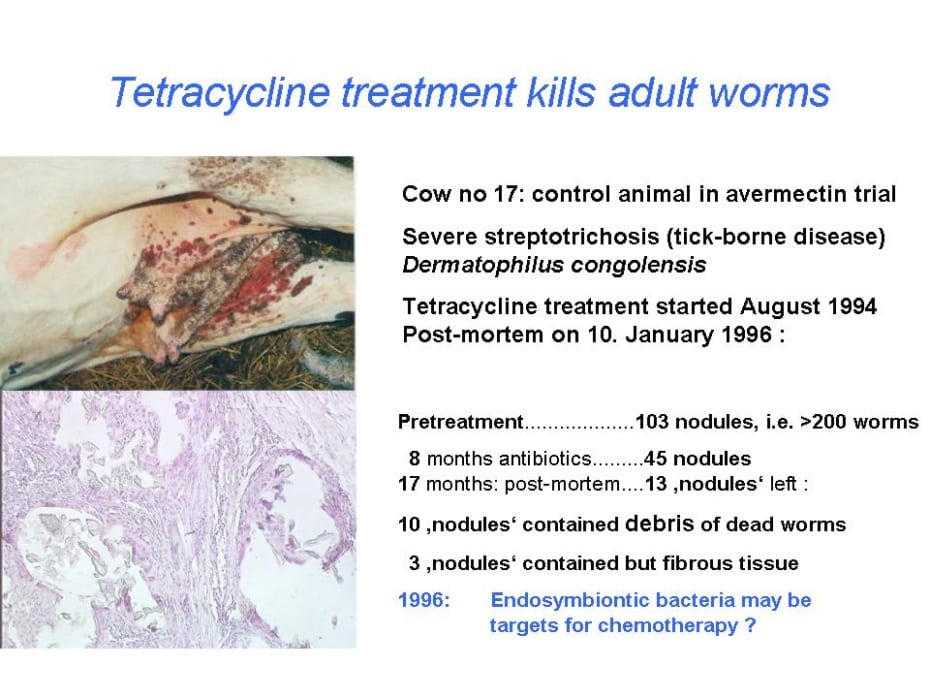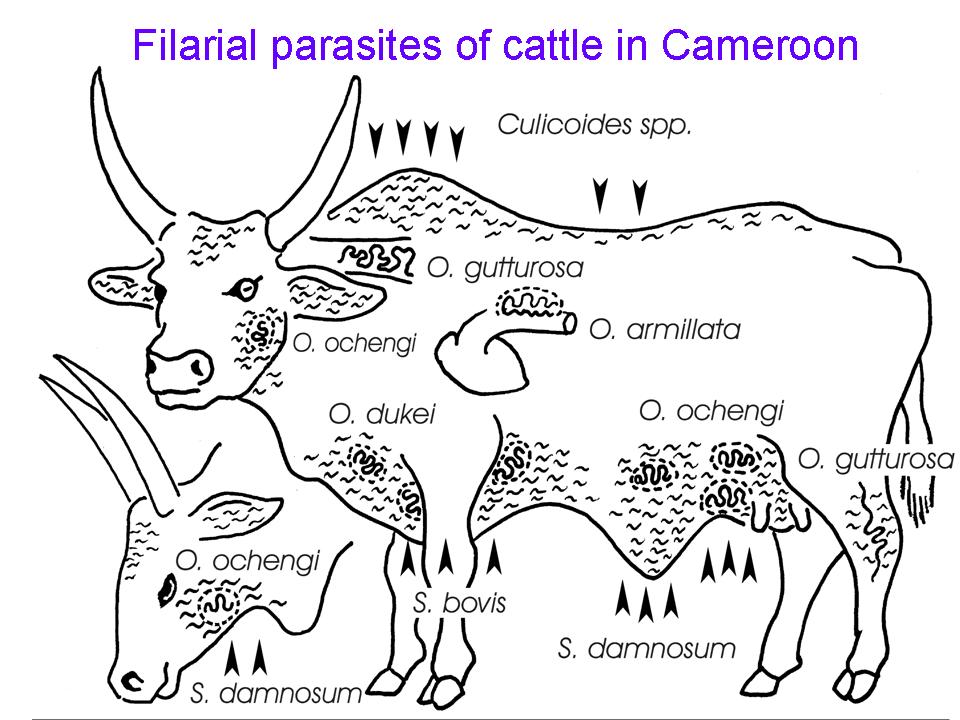
Adult Worms which live in nodules under the skin
The Microfilaria are the first stage lava which dwell in the skin and wait to be taken up by a vector black fly. Only in the vector do they continue their development and grow up to infective third stage lava.
What is onchocerciasis?
Onchocerciasis is a parasitic disease with an insect vector that breeds in water. It is the world’s second leading infectious cause of blindness. Controlling insect breeding sites in rivers is one of the pillars of prevention. Onchocerciasis is often called “river blindness” because in extreme cases, it can cause blindness, and because the blackfly, which carries it, abounds in fertile riverside areas. More than 120 million people in 37 countries in Africa, Latin America, and Yemen are at risk of the disease. Over 37 million people have been infected (source WHO), often affecting those living in poor, rural African communities. There is currently no official data about the levels of blindness in Cameroon, but it is estimated that about 1% of the population are blind (Sightsavers International), with the principal causes being cataract, river blindness, corneal scarring and refractive error.

design by P. Wenk & A. Renz
Where are the high risk destinations for infection?
Onchocerciasis is present in 36 countries, 29 of them in sub-Saharan Africa, Yemen in the Arabian peninsula and six in the Americas. As a public health problem the disease is most closely associated with Africa, where it constitutes a serious obstacle to socio-economic development.
Out of some 120 million people world-wide who are at risk of onchocerciasis, 96% are in Africa. A total of 18 million people are infected with the disease and have tiny worms under the skin (dermal microfilariae), of whom 99% are in Africa. The worst affected countries are Angola, Burundi, Cameroon, Chad, the Central African Republic (CAR), the Congo, the Democratic Republic of the Congo, Ethiopia, Equatorial-Guinea, Gabon, Kenya, Liberia, Malawi, Mozambique, Nigeria, Rwanda, Uganda, Sudan and Tanzania.
How is onchocerciasis transmitted?
Onchocerciasis is caused by Onchocerca volvulus, a parasitic worm that lives for up to 14 years in the human body. It is spread through the bite of a blackfly of the Simulium damnosum species complex, which breeds in fast-flowing rivers and streams.
When the fly bites, it deposits the larvae of a parasitic worm, which matures to adulthood and produces millions of tiny worms, called microfilaria. Adults emerge after 8-12 days and live for up to four weeks, during which they can cover hundreds of kilometres in flight.
Each adult female worm, thin but more than 0.5 metre in length, produces millions of microfilariae (microscopic larvae) that migrate throughout the body.
After mating, the female blackfly seeks a bloodmeal and may ingest microfilariae if the meal is taken from a person infected with onchocerciasis.
A few of these microfilariae may transform into infective larvae within the blackfly, which are then injected into the person from whom the next meal is taken and subsequently develop into adult parasites, thus completing the life cycle of the parasite.

Crosstransmission of animal and human onchocercoses (A. Renz)
What are the symptoms of onchocerciasis?
When the microfilariae migrate throughout the body and give rise to a variety of symptoms rashes, lesions, intense itching and depigmentation of the skin; lymphadenitis, which results in hanging groins and elephantiasis of the genitals, general debilitation and serious visual impairment, including blindness.

from Wenk & Renz: Parasitologie, Thieme-Verlag, 2003
How soon do onchocerciasis symptoms occur?
Onchocerciasis manifestations begin to occur in persons one to three years after the injection of infective larvae.
How is onchocerciasis treated?
The development of ivermectin in the 1980’s provided for the first time a safe, effective drug capable of reducing the numbers of skin microfilariae in infected people and resulting in clinical improvement and decreased transmission of infection.

- Tetracycline kills Onchocerca worms! (A. Renz)
At that time this idea – very revolutionary at this time – did not interest many people, when Alfons Renz promoted it first: No reaction from WHO, and our veterinarian colleague from the Liverpool School of Tropical Medicine even argued “if this really worked, than we would have known this since longtime, because tetracycline is in use since may years”. Nevertheless, together with the project veterinarian Dr. Mark Bronsvoort, we decided to repeat the trial and added 6 oxytetracycline-treated cattle in the next trial round, aimed to test Moxidectin (1997). Again, all worms died (Langworthy et al. 2000). At the same time, Prof. Dieter Büttner and Dr. Achim Hoerauf from the Bernhard Nocht Institute in Hamburg, who had learned from our success with tetracycline during a filariasis meeting in Woods Hole, repeated the experiment with a rodent filaria, Litomosoides sigmodontis. Again, these filarial worms, which also harbour endobacteria, were killed by tetracycline treatment. Now, it became clear, these these ‘Rickettsia-like-bacteria’ (since known to be Wolbachia species) must be truely endosymbiotic partners of the filaria, which cannot survive without them
What can I do?
Take precautions to avoid blackfly bites and seek medical advice if you feel you have been bitten.
The bovine model: Onchocerca ochengi in cattle
Cattle in the Sudan savanna of Cameroon are commonly parasitized by a number of filarial species, of which Onchocerca ochengi is the most common one on the Adamaoua plateau:

from Renz in: Service, the Encyclopedia of arthropod transmitted infections
Starting i
